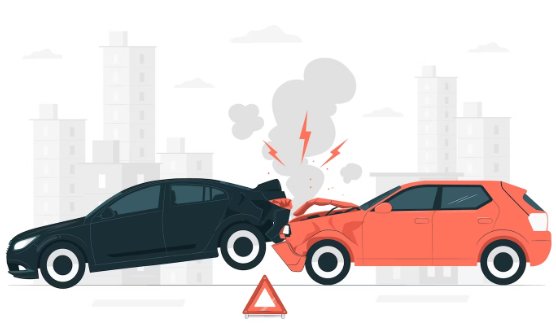Tailgating stands out as not just an annoyance but a genuine hazard, threatening the safety of everyone on the road. This behavior, characterized by one vehicle following another more closely than is safe or reasonable, is all too common and can lead to dangerous situations, including accidents. Recognizing the importance of addressing this issue, we delve into the essentials of handling tailgaters with poise and knowledge, ensuring your journey remains safe and stress-free.
Understanding Tailgating
Tailgating is often a result of impatience or obliviousness on the part of the trailing driver, but regardless of intent, it significantly increases the risk of rear-end collisions. The National Highway Traffic Safety Administration advocates for a minimum of three to four seconds of following distance under normal conditions—a guideline frequently ignored by the tailgater. This recommended buffer allows sufficient time for reaction and stopping, crucial elements in avoiding accidents.
Strategies for Dealing with Tailgaters
Maintain Your Composure
The first and perhaps most crucial response to tailgating is to keep calm. Reacting aggressively, such as through yelling or gesturing, can escalate the situation, increasing the likelihood of an accident. By staying composed, you maintain control over the situation and are better positioned to respond in a manner that prioritizes safety.
Facilitate Safe Passing
On multi-lane roads, the simplest way to deal with a tailgater is to allow them to pass by moving over to the right lane when it’s safe to do so. If you find yourself on a single-lane road, look for a safe opportunity to pull over—perhaps into a parking lot or gas station—and let the tailgater go by. This action not only resolves the immediate issue but also helps maintain the flow of traffic.
Let it Go and Empathize
Don’t let pride get in the way. Let the tailgater pass and continue on with your life. You never know, the tailgater may have an emergency that requires them to get somewhere….fast!
Consistent Speed Maintenance
Varying your speed unpredictably can confuse tailgaters and increase the risk of a collision. Aim to keep your speed steady, providing the tailgater with a predictable driving environment. This consistency can reduce tension and make it easier for the tailgater to find a safe moment to pass.
Braking Safely
While it might be tempting to “brake check” a tailgater to signal your displeasure, such actions are dangerous and can lead to accidents. Instead, if you need to slow down, do so gradually, giving the tailgater ample time to react and adjust their speed accordingly.
Enhanced Road Awareness
Tailgating situations require heightened awareness. Pay close attention to your surroundings, anticipating the need to react not just to the tailgater but to other potential hazards on the road. This comprehensive vigilance can help you navigate safely, even under pressure.
Legal and Insurance Implications of Being Hit by a Tailgater
In the unfortunate event of a collision, the tailgater is typically deemed at fault, given the expectation of maintaining a safe following distance. Should this occur, the tailgater’s liability insurance is generally responsible for covering damages and injuries to the other party. However, situations can vary, and there are instances where the leading driver might share fault, particularly if they’ve engaged in unsafe braking or other provocative behaviors.
In such cases, having collision coverage can provide an additional layer of financial protection, allowing you to claim damages irrespective of fault. Moreover, witness statements can be invaluable in these scenarios, offering objective insights that help clarify the events leading to the accident.
Conclusion
Dealing with tailgaters is an inevitable aspect of driving, yet it doesn’t have to compromise your safety or peace of mind. By remaining calm, making it easy for the tailgater to pass, maintaining a steady speed, braking safely, and staying vigilant, you can effectively mitigate the risks associated with this aggressive driving behavior. Furthermore, understanding the legal and insurance implications of tailgating incidents prepares you for the aftermath should an accident occur.
Ultimately, the road is a shared space, and navigating it safely requires patience, awareness, and a commitment to defensive driving practices. By adopting the strategies outlined above, you can protect yourself and contribute to a safer driving environment for everyone.
FAQs
What if the tailgater doesn’t pass even when given the opportunity?
If you’ve made space for the tailgater to pass and they choose not to take it, maintain your calm and continue driving safely at a consistent speed. It’s possible they’re not aware of their behavior. Focus on your safety and don’t engage in any actions that could escalate the situation.
How can I prevent becoming a tailgater myself?
Always be mindful of your following distance, keeping at least three to four seconds behind the vehicle in front of you. Adjust this distance based on speed, road conditions, and visibility. Regularly check your driving habits and correct them if you find yourself creeping too close to other vehicles.
What should I do if there’s no safe place to pull over and let a tailgater pass?
If you cannot find a safe place to pull over, continue to drive safely and at a steady speed until you can find a suitable spot. Do not speed up or make sudden moves to escape the tailgater, as this can create dangerous situations for yourself and others.
Get a Auto Insurance Quote
Looking for an accurate and honest auto insurance quote?
Contact an insurance agency like tutenagency or get a quote online. Call (334) 502-5111 to insure your vehicle today.
Disclaimer: This content is for informational purposes only and should not be considered legal or financial advice. Always consult with qualified professionals in legal and financial fields before making any decisions.

